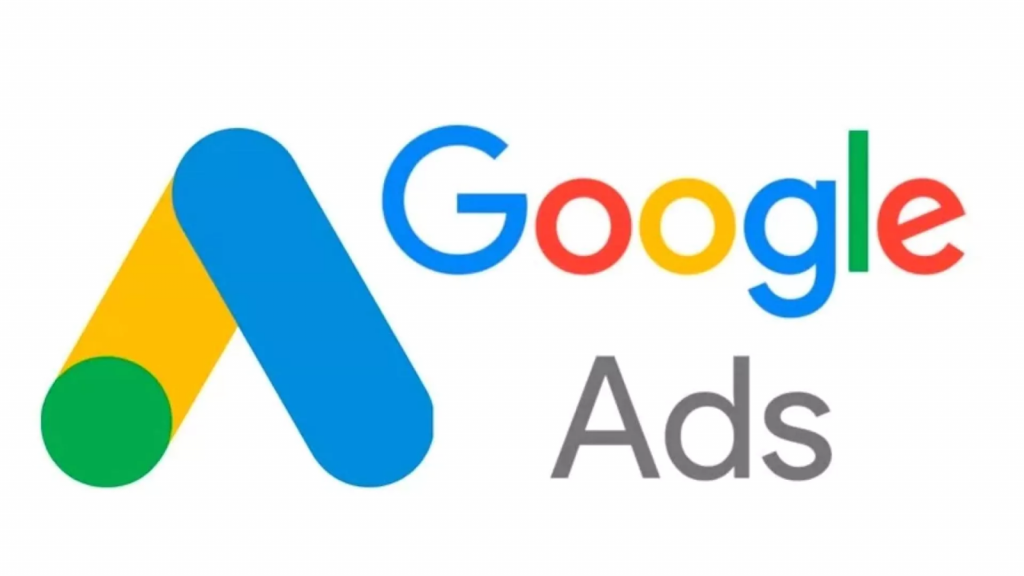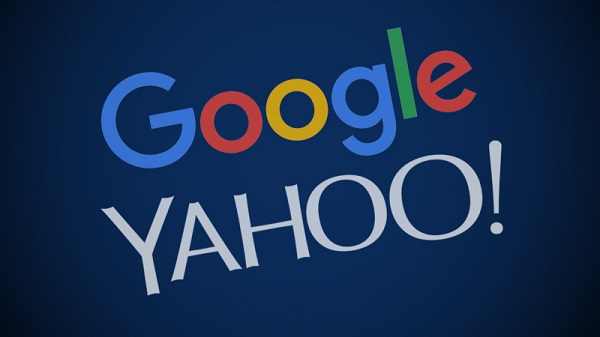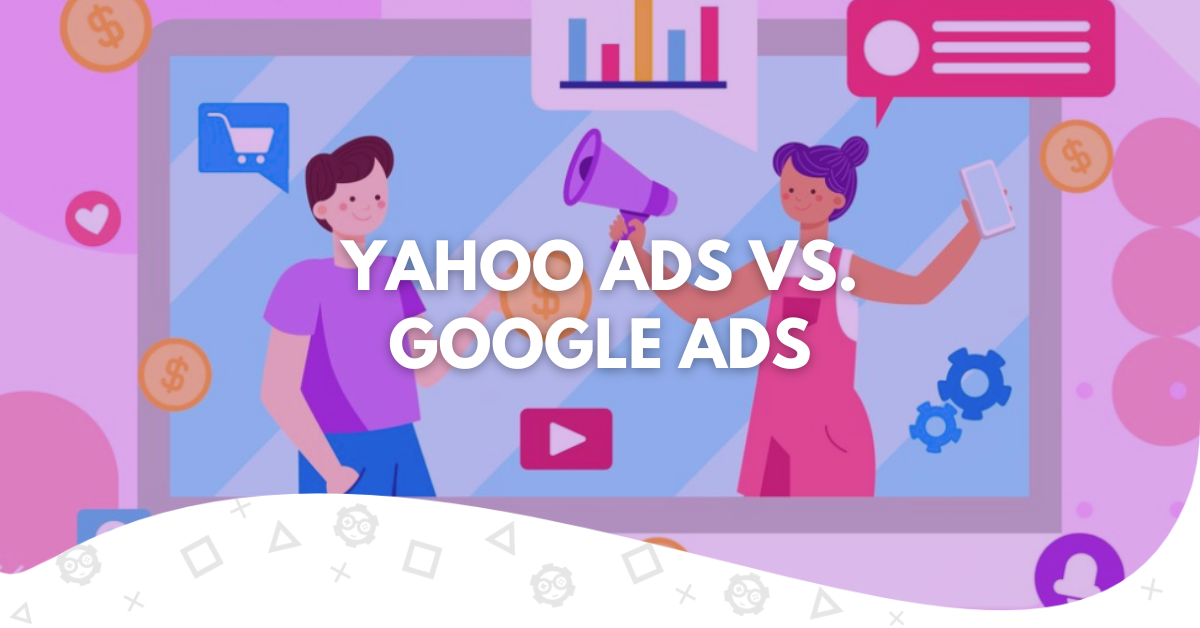In the ever-evolving landscape of online advertising, choosing the right platform to reach your target audience is crucial. Two giants in the field, Yahoo and Google, offer distinct advertising solutions that cater to the diverse needs of businesses. This article will delve into Yahoo Ads and Google Ads, formerly known as Google AdWords, to help you understand their key features, benefits, and downsides. Whether you’re a seasoned marketer or just starting with online advertising, this comparison will provide valuable insights to help you make informed decisions for your marketing campaigns.
What is Yahoo Ads?

Yahoo Advertising, now known as Yahoo Advertising Solutions, is Yahoo’s online advertising platform. It is a part of the Yahoo Bing Network, which means that Yahoo Ads can reach a significant user base across various countries, including the United States, Japan, South Korea, and Russia. Yahoo Advertising offers several types of ads, including search ads, native ads, and display ads, providing advertisers with various options to reach their target audience.
Yahoo Ads enables businesses to create and run ads that appear on Yahoo Search and partner sites, making it a valuable choice for those looking to tap into Yahoo’s market share. It also provides a user-friendly interface for advertisers to organize their campaigns, target specific demographics, and monitor the performance of their ads through analytics.
One of the significant advantages of Yahoo Ads is its ability to reach users on the Yahoo search engine, offering an opportunity to connect with a different set of users compared to Google Ads. Yahoo ads can be especially appealing to certain businesses looking to diversify their audience exposure and gain more online businesses.
What is Google Ads?

Google Ads, previously known as Google’s Adwords, is Google’s advertising platform and one of the most widely used online advertising tools globally. It operates on the Google search engines and the Google Display Network, allowing businesses to create ads that appear on search results, partner websites, and within mobile apps. With Google Ads, advertisers can target specific keywords and display their ads to users who search for them, ensuring their ads reach a relevant audience.
Google Ads is incredibly popular due to its vast reach, powerful targeting options, and efficient pay-per-click (PPC) model. Advertisers can set budgets, choose their target audience based on location, demographics, and interests, and optimize their campaigns for better results. Google Ads also offers various ad formats, including text, image, and video, making it suitable for many businesses.
Regarding market share and popularity, Google Ads is often the top choice for online businesses looking to create effective online marketing campaigns. With its robust analytics and the ability to filter and lead traffic to your website, Google Ads remains a favorite among advertisers worldwide.
Choosing the Right Advertising Platform for Your Business

Online advertising has become an indispensable tool for businesses looking to reach a wider audience and drive growth. However, with numerous advertising platforms available, selecting the right one for your business can be a daunting task. Let’s explore the essential factors when choosing the perfect advertising platform to achieve your business goals.
Know Your Target Audience
Understanding your target audience is the cornerstone of effective advertising. Different platforms cater to distinct demographics and user behaviors. Research your audience’s online habits, preferences, and characteristics. Are they active on social media, frequent search engine users, or more inclined to engage with content on niche websites? Tailoring your choice to your audience’s online habits can significantly impact your campaign’s success.
Define Your Objectives
Clearly defining your advertising objectives is crucial. Are you looking to increase brand awareness, drive website traffic, boost sales, or generate leads? Each platform offers unique features and tools that align with specific pals. For example, if you want to generate website traffic, pay-per-click (PPC) advertising on search engines like Google might be the way to go.
Consider Your Budget
Your advertising budget plays a pivotal role in platform selection. Different platforms have varying pricing structures, and it’s essential to align your budget with your chosen platform’s requirements. For instance, social media advertising may allow you to start with a smaller budget, while competitive keywords in search engine advertising might require a more substantial investment.
Evaluate Platform Expertise
Some advertising platforms specialize in specific regions or industries. If your business operates in a niche market or caters to a particular country, consider platforms with expertise in those areas. For example, if you’re targeting the Japanese market, Yahoo Ads may be a more suitable choice due to its strong presence in Japan.
Assess Competition and Pricing
Analyze the competition on the chosen platform. Highly competitive platforms may lead to higher advertising costs and reduced visibility. Conversely, less competitive platforms might offer cost-effective opportunities with less clutter.
Leverage Analytics
The ability to measure and analyze the performance of your advertising campaigns is vital. Platforms that offer advanced analytics tools can help you track key metrics, such as click-through rates (CTR), impressions, and conversions. Data-driven decisions are the foundation of successful online advertising.
Consider the User Experience
A seamless and user-friendly interface is essential for efficiently managing your advertising campaigns. Choose a platform that simplifies the process of creating and optimizing ads. The ease of use can save time and effort, allowing you to focus on your core business activities.
Experiment and Adapt
Don’t be afraid to experiment with multiple platforms. Running small-scale test campaigns can help you determine which platform resonates most with your target audience and deliver the best return on investment. Continuously adapt your strategy based on the performance data you collect.
Choosing the right advertising platform for your business is a critical decision that can significantly impact your marketing success. By considering your target audience, objectives, budget, expertise, competition, analytics, user experience, and the ability to adapt, you can make an informed choice that aligns with your business goals and ensures a strong online presence. Remember that selecting the right platform is not a one-time decision; it requires ongoing evaluation and adjustment to stay in line with evolving market trends and customer preferences.
Differences Between Yahoo Ads and Google Ads: Making the Right Choice for Your Business

Regarding online advertising, two giants dominate the landscape: Yahoo Ads and Google Ads. Both platforms offer powerful tools and vast reach, but they differ in several key aspects. Understanding these differences is essential for making an informed choice for your digital marketing campaigns.
Platform Reach and Popularity
Google Ads, formerly Google Adwords, is the undisputed leader regarding market share and popularity. It reaches a more extensive and diverse global audience, making it a top choice for businesses targeting various users across different countries. Google Ads also integrates with Google’s search engine, Google Adsense, and Display Network, offering extensive visibility.
In contrast, Yahoo Ads, though robust, may have a more limited reach compared to Google Ads, particularly in certain regions. If you’re targeting specific countries where Yahoo has a strong presence, like Japan and South Korea, it can be an excellent choice to explore new markets.
User-Friendly Interface
Google Ads is known for its user-friendly interface and comprehensive features. It offers a straightforward system for setting up campaigns, choosing keywords, and creating ads. The platform’s ease of use is particularly beneficial for beginners in online advertising.
Yahoo Ads also provides a user-friendly interface for advertisers to organize and run campaigns, but it may not be as intuitive as Google Ads for some users. Advertisers often find Google’s AdWords platform more accessible, especially if they are new to online marketing.
Ad Formats and Types
Both platforms offer a variety of ad formats, including search ads, native ads, and display ads. However, Google Ads provides a broader range of options, such as text ads, image ads, video ads, and app promotion ads. This diversity can be advantageous for businesses with different marketing needs.
Yahoo Ads, on the other hand, while still offering effective ad types, may not have the same extensive range of options as Google Ads. The choice of ad format may be influenced by the preferences of your target audience and the nature of your business.
Analytics and Data
Google Ads offers advanced analytics and tracking tools, allowing advertisers to monitor the performance of their campaigns in real-time. This data-driven approach helps in optimizing campaigns for better results.
Yahoo Ads provides analytical tools, but they may not be as comprehensive as those Google Ads offers. Advertisers should consider their specific reporting and data analysis needs when choosing a platform.
Target Audience and Demographics
Google Ads provides extensive targeting options, allowing you to define your audience based on location, demographics, interests, and more. This is particularly valuable for businesses that fine-tune their ad campaigns to reach the most relevant users.
Yahoo Ads also offers demographic targeting, but its reach and user base may differ from Google Ads. Choosing the right platform may depend on your target audience’s online behavior and preferences.
Conclusion
In the dynamic world of online advertising, the choice between Yahoo Ads and Google Ads is a decision of paramount importance, impacting the very essence of your marketing strategy. To succeed, it is essential to meticulously organize campaigns that align with your business goals and target audience.
Both platforms offer many services, yet the nuances of their offerings require careful consideration. Whether you focus on reaching a specialized niche through category targeting or casting a wider net to engage with more people, the platform you select should seamlessly harmonize with your specific objectives.
Money is a crucial component of the equation. Google Ads’ pay-per-click model can necessitate a larger spend, particularly in highly competitive industries. In contrast, Yahoo Ads can be a more cost-effective choice in markets with less competition but may come with a downside in terms of global reach. The key is to understand your budget and leverage it effectively on the chosen platform.
Analyzing your target audience’s online behavior is fundamental, for it’s in this realm where the science and method of your digital marketing strategy emerge. Tailor your decision based on their preferences and habits, and consider the education and regional expertise of each platform to maximize your reach. Utilize analytics to make data-driven decisions and ensure every click is a strategic step towards success.

A PPC specialist who started with organic social media. For several years, the core of his activities are:- Google Ads, Microsoft Ads, Meta Ads, TikTok Ads, Twitter Ads, Linkedin Ads. He has led campaigns with a global reach, e.g. for FootballTeam, G2A, ETOTO, as well as many smaller campaigns in the sports, construction and financial industries. Has full focus on ROAS. Privately, a fan of football, history of wars and Star Wars.

